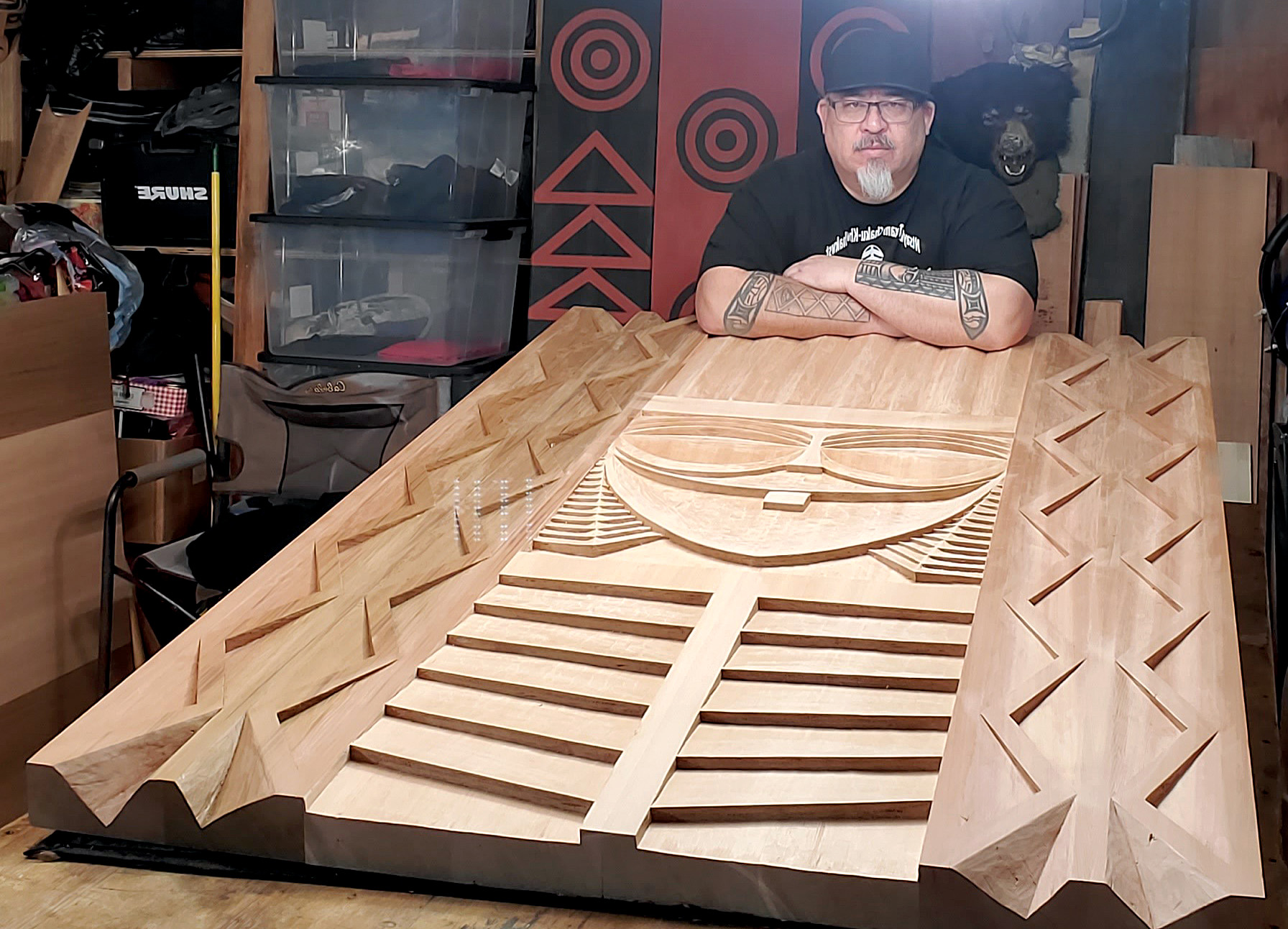Culture
Mercier honored for art

By Nicole Montesano
Smoke Signals staff writer
Tribal Cultural Advisor and artist Bobby Mercier is being honored for his traditional Chinookan woodcarving art by Contemporary Art Curator Magazine.
Mercier said it’s notable to have the unique art style recognized.
“I think just somebody actually recognizing that it’s not Salish art, it’s not Californian art, it’s not eastern Oregon art; it has this one place in the world,” he said. “Everybody sees our stuff, and says ‘oh, like you do totems,’ and, no, we don’t do frogs and whales and bears, and stack ‘em on each other; that’s not what we do, so having this be recognized and raising that awareness, that’s kind of cool.”
Contemporary Art Curator Magazine, an online magazine that promotes and supports artists internationally, has awarded Mercier a Collectors Art Prize recognition for his work. The prize is awarded to a handful of artists every two years. It is not open to applications; recipients are selected by a group of curators, museum directors and critics.
In addition, Mercier will be honored during the Native Heritage Night at the Portland Trail Blazers game at the Moda Center Wednesday, Nov. 26, in honor of Native American Heritage Month.
“My art is a reflection of where I come from and who I am,” Mercier wrote for the magazine. “As a Chinookan carver and digital artist, I carry the stories, teachings and spirit of my ancestors into every piece I create. My hands learned their way through the cedar from those who came before me and my heart stays close to the old ways, even as I explore new forms of expression. For me, art is not just about creating something beautiful – it's about connection. It's how we speak across generations, how we honor the ones who came before us and how we carry our culture into the future. I carve to remember. I design to preserve. I create so that our stories, our spirits and our songs are not forgotten.”
He continued, “My work stands as both resistance and remembrance. It honors the power of place, the wisdom in the old ones, and the responsibility we carry forward. Art is ceremony. It is teaching. It is survival. And for me, it is home.”
He noted that there are few living practitioners.
“You know there’s a only a few of us that carve,” Mercier said. “There’s only a handful of us that even do this, so it’s kind of rare. People don’t really see that.”
Mercier, whose work has been featured in the magazine before, said he does not sell his wood carvings – recalling a man who once offered him a blank check for one piece. Mercier turned him down.
He said the man was angered, telling him “Everything’s for sale.”
“Not to me it isn’t,” he said. “Because it means nothing to them; no ties to them. It’s just art to them, just something that’s cool. But to me, that’s my bloodline; it’s tied to me, and everybody in my bloodline. … I will sell canvas prints of it … but I won’t sell you the original.”
Instead, he said, he uses his work as a kind of living museum.
“I’d rather just have it here in our community. … All the rest is leaning right here against my wall in my office,” he said.
Mercier noted that there are few historic examples that survived colonialism.
“Most of our longhouses and villages were burned, pushed over and burned,” he said. “Some of the things they found were in mud, pushed over in the river, so not a lot survived.”
Mercier and his fellow carvers had to study those few remaining pieces to learn the style. He wants to make things easier for today’s youth.
“We have photos of about everything that’s out there, but there’s no place you can go and look at these carved wood pieces, so to have these here, where our kids and come and look at them and go oh, that’s how that’s carved …to me that sounds cool because we didn’t have that,” he said. “So, this is a place where they can come and actually see it and learn it and touch it and be around something like that.”
In addition, Mercier said, he’s working on a book.
“I’m hoping to start it later on this winter or maybe by springtime and just go through all the different designs and different options of how to carve and what to carve, and some of the unwritten rules of stuff,” he said. “I’m working on asking permission to use different images and just have a guidebook, hopefully to inspire Tribal youth. Not everybody’s a beader or a weaver. Some people are carvers and when they figure that out, it’s nice to have a book to follow along. There are so many books out there on form line and the stuff for Salish stuff; there’s a lot of books out there; there’s some really good ones and there’s nothing for us, so I’m hoping to get that done for the youth.”
